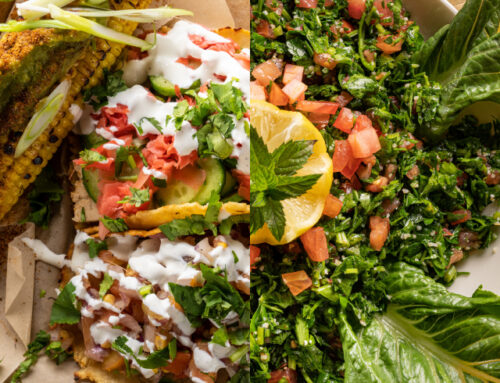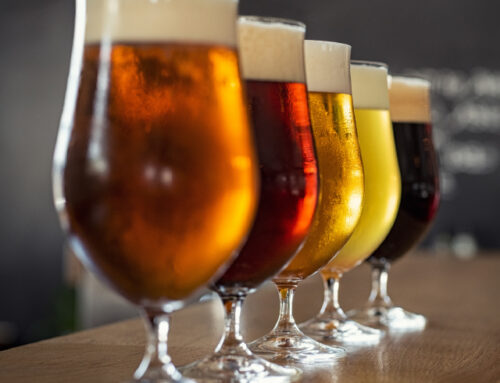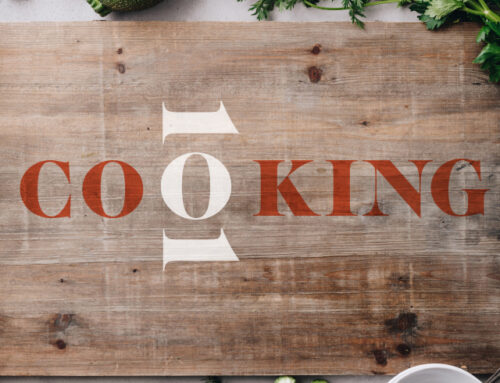Decorative & Delicious: Adding a Tasty Twist to Landscaping
by Lenora Dannelke

A formal produce garden may not be right for everyone – space is a consideration, not to mention a daunting amount of labor – but even a shady balcony appointed with a hanging basket of impatiens mixed with Swiss chard or a flower-filled window box accented with dill or chives can deliver a surprising array of fresh flavors.
Incorporating edibles into landscaping is a tradition that dates back to Colonial days, and Mike McGrath, author and host of WHYY’s National Public Radio show You Bet Your Garden, points out that “a lot of edibles are ornamental.”
Cold-hardy pansies are a favorite of this gardening guru, who notes, “Smart people plant their pansies in September. Pansy flowers are not only edible, but they’re one of the only food sources of rutin – which is an essential nutrient. If you go to a health food store and buy a bottle that says ‘varicose vein helper,’ that’ll be all rutin. Put pansy flowers on a dull green salad and, boom, you’ve turned it into something you’d pay fifty dollars for in a New York restaurant. And pansies have a great mouth feel. Eat a dose of five pansy flowers a day over the course of a year of two, and varicose veins or spider veins will be less noticeable. Rutin is necessary to build up the cellular structure of capillary walls, which has secondary benefits for heart health and blood pressure. But more importantly, you’ll look better in shorts or a bathing suit in the summer.”
Tomatoes, though, are what McGrath refers to as “the gateway drug of edible gardening. Everybody wants to rediscover that old-time tomato flavor – but the tomato plant is one of the least pretty things to grow. They go in back of the house.” However, determined tomato-lovers can also choose a type specifically developed for patio or container gardening, which bear smaller fruits but are more compact.
For showy, front-of-the-house planting, McGrath recommends eggplants. “There are spectacular varieties of Asian and specialty eggplants – long and thin, in delicate shades of lavender and purple, even variegated. If you are a real fan of flowers, one thing that’s under-appreciated in the edibility world are the flowers that precede some of these fruits. They’re prettier than any orchid you’ve even seen. If you’re willing to sacrifice a couple potential fruits, carefully clip off a couple of flowers, bring them inside and put them in a little glass bowl with water. You can stare at those for hours. They’re nature’s real beauties. The same is true of a lot of pepper plants, especially hot pepper plants.”
A favorite of McGrath’s is the vibrant, medium-heat Ordono pepper, also known as NuMex Twilight. “That goes through a series of five color changes. You can get something that looks like a Christmas tree with lights in your garden!” he says, noting that all peppers, including those labeled as “ornamental,” are edible. “People in America are trained to eat green bell peppers, but a green pepper is a totally unripe fruit. Leave it alone on the plant and it will color up to a beautiful shade of red, yellow, orange or – believe it not – chocolate.” Unlike sweet bell peppers, Ordono fruits reach upward instead of hanging down, and don’t require pruning.
For growers with a little bit of land, McGrath suggests planting Platinum Lady corn. “It’s one of the sweetest sweet corns you can grow, it’s a well-behaved plant that grows from four- to six-feet, and it will blow your neighbors’ minds. The stalks are purple, the leaves are purple, the pollen tassels that appear at the top of the plant are purple and the silks that come out of the emerging ears are purple,” he says. Inside is a beautiful ear of incredibly sweet white corn – though he says you could grow this for the plants alone. “There’s nothing more dramatic.”
Leaf lettuce is another edible that grows well tucked amid ornamental flowers and shrubs. “Varieties such as Green Ice simply redefine the color green, and there’s a Lola Rosa lettuce that goes beyond red, into being a deep purple. Leaf lettuces are very full and show off their leaves,” says McGrath, who also recommends planting a mixed-seed packet for a riot of different colors in a garden or container. “You don’t need to wait for the plant to develop to eat it. It’s edible as soon as you can see it.” As you trim and consume, the leaves will come back – which is called “cut and come again” gardening. The same is true of baby zucchinis and slender young string beans – harvest them while they’re still small and have the most concentrated sugars. “The more you pick, the more flowers the plant will pump out.”
Maggie Saska, Plant Production Specialist at the Rodale Institute in Kutztown, recommends thinking long-term by planting bushes like blueberries, chokeberries and elderberries. “You’ll have beautiful fruits and foliage,” she says. “That’s thinking big, but you can shrink that down to apartment or patio size with planting in containers, and you can change those from year to year. If you like to do a lot of cooking, there are beautiful basils out there with bright green, purple or mottled foliage. And, if you’re just starting out, herbs are a great way to go.” Other recommendations include thyme and rosemary. As an attractive space saver, Saska suggests training cherry tomatoes on trellises.
Since the Rodale Institute specializes in promoting organics, Saska cautions home gardeners to have an overview of how they are treating their entire landscape – and avoid the use of chemicals near edible plants.
“Start with something that you want to eat,” Saska says. “That’ll give you a reason to be in the garden.”
As seen in the Summer/Fall 2015 Issue
Click to Visit Our Advertisers




